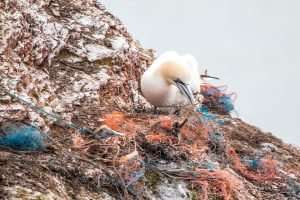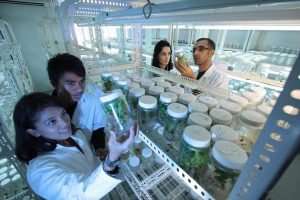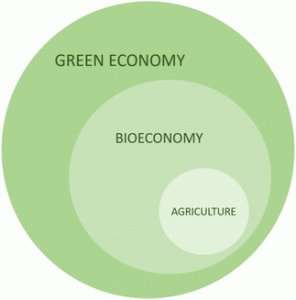Building a circular bioeconomy with synthetic biology

On April 2010, the Gulf of Mexico turned black. The largest marine oil spill initiated by an explosion of methane gas on the Deepwater Horizon drilling rig is supposed to have leaked around 800 million liters of oil into the environment. Causing severe damage to the whole ecosystem of the Gulf of Mexico and to the people living around it, oil spills such as this demonstrate that our reliance on oil is coupled to serious consequences. Even in recent times, such as in the disastrous oil spill on the coast of the Indonesian port city of Balikpapan on Borneo which led to the declaration of a state of emergency, large-scale accidents involving oil can cause immeasurable damage. We need oil for countless high-value chemicals, such as dyes, fuels and drugs, as well as for plastic. Plastic that ends up in locations such as the Great Pacific garbage patch, a marine area which is estimated to be twice as large as France. From the moment of pumping up the limited resource of oil to its last moment as plastic trash, oil is an unsustainable source of energy and chemicals. So how can we do better?
White biotechnology takes advantage of enzymatic processes to produce high-value chemicals from sustainable sources with less energy consumption as well as waste production. An early example of this would be enzymes in washing powder, which allow for efficient cleaning at lower temperatures (i.e. less energy consumption). In recent times, whole organisms ranging from bacteria over yeasts up to plants are used for production by enzymatic catalysis. From insulin production in genetically modified bacteria to the synthesis of artemisinic acid – a malaria drug precursor – in engineered yeast, complex and sought-after chemicals can be produced essentially from glucose as a starting material. Synthetic biology, the incorporation of engineering principles into biology, has given white biotechnology a substantial impetus by enabling the rational design or improvement of production pathways. With synthetic biology being hailed as one of the ten most significant emerging technologies by the World Economic Forum 2016 and biotechnology as one of the six most important technologies for our sustainable future by the EU, white biotechnology is perfectly poised to serve as a foundation for a circular bioeconomy.

Built on the idea of reconciling economic, environmental and societal goals, a circular bioeconomy needs to be sustainable and address the shortcomings currently harboured by the oil economy. Instead of using crude oil as the starting point for our material needs, a circular bioeconomy aims at using low-cost and greener carbon sources such as agricultural and industrial waste or non-edible sugar crops to produce useful chemicals in a sustainable way. This is achieved by using directed enzyme evolution and metabolic pathway engineering to develop efficient synthesis pathways from greener carbon sources, as well as using light as an energy source for the generation of biofuel from algae in the future. Plastic based on polyhydroxybutyrate (PHB) or polyhydroxyalkanoates (PHAs) can now be produced in microbes from sugar. These bioplastics are not only produced from sustainable sources but are also biodegradable and therefore do not accumulate in landfills or the ocean. In addition to offering an alternative, products of a bioeconomy can also help to deal with the ensuing problems of current technologies, such as genetically engineered oil-digesting microbes or enzymes engineered for the degradation of plastics like polyethylene terephthalate (PET). Synthetic biology is thus offering potential solutions to the Great Pacific garbage patch.

More information: Regina Birner. Bioeconomy Concepts, Bioeconomy (2017). DOI: 10.1007/978-3-319-68152-8_3
Provided by Public Library of Science
This story is republished courtesy of PLOS Blogs: blogs.plos.org.




















